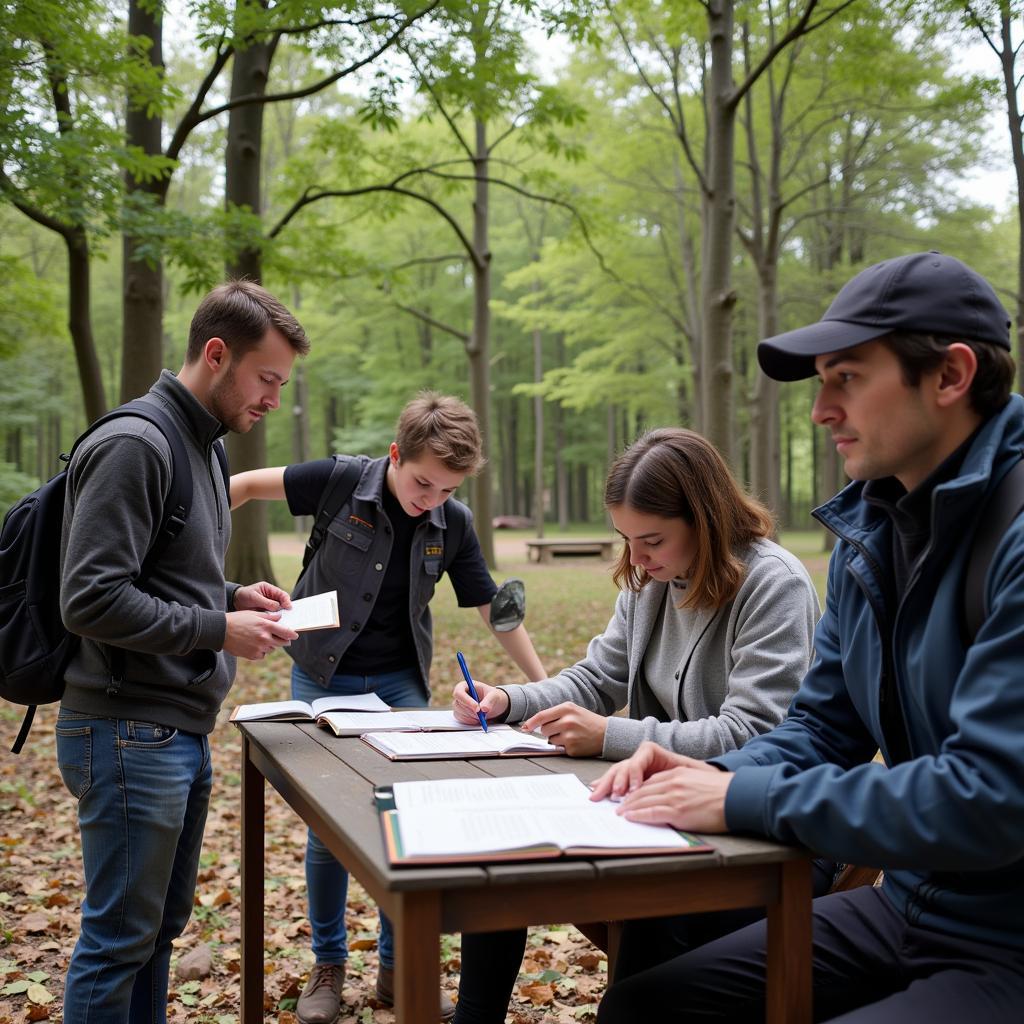Ethnomethodology In Research offers a fascinating lens through which we can understand the complexities of social life and human behavior. Unlike traditional research methods that often rely on pre-determined categories and assumptions, ethnomethodology delves into the everyday practices and commonsense reasoning people use to navigate their social worlds.
Imagine you’re trying to understand the rules of a game. A traditional researcher might interview players about the rules, looking for a definitive set of guidelines. An ethnomethodologist, however, would observe the game in action, paying close attention to how players interpret and enact the rules in real-time, even if those interpretations vary or contradict the “official” rules.
Deconstructing the Everyday: What is Ethnomethodology?
Coined by sociologist Harold Garfinkel in the 1950s, ethnomethodology challenges us to question the taken-for-granted aspects of social order. It emphasizes that social order is not something imposed from above, but rather something that is constantly achieved and re-achieved through the ongoing, collaborative efforts of individuals in their everyday lives.
Ethnomethodology, in its pursuit to unravel the ‘invisible’ threads of social interaction, utilizes a unique set of research methods. These techniques, far from being rigid formulas, are flexible and adaptable to the specific context of the study. Let’s delve into some key methods employed:
- Observations: Ethnomethodologists immerse themselves in the field, meticulously observing and documenting how individuals make sense of their surroundings and interact with one another.
- Conversation Analysis: This method involves a detailed examination of naturally occurring conversations to uncover the underlying structures and rules that govern how people communicate and understand each other.
- Breaching Experiments: These involve deliberately disrupting social norms to reveal the taken-for-granted assumptions that underpin everyday life. Imagine abruptly stopping in the middle of a crowded sidewalk and observing how others react. Such experiments, though often humorous, provide valuable insights into the often-unspoken rules that govern social behavior.
Ethnomethodology in Action: Unveiling Hidden Meanings
Ethnomethodology’s commitment to understanding the intricate details of social life has made it a valuable tool across various disciplines. Let’s explore some compelling examples:
- Understanding Workplace Dynamics: Ethnomethodology can illuminate the unspoken rules and practices that shape interactions in workplaces. For instance, observing how colleagues negotiate deadlines or provide feedback can reveal the subtle power dynamics at play.
- Deciphering Healthcare Communication: In healthcare settings, effective communication is paramount. Ethnomethodology can help us understand how doctors, nurses, and patients interpret medical information and make decisions, ultimately leading to better patient care.
- Enhancing Design and Technology: By studying how people interact with technology and designed spaces, ethnomethodology can inform the creation of more intuitive and user-friendly products and environments.
 Researchers observing and taking notes on human interaction in a public setting
Researchers observing and taking notes on human interaction in a public setting
Navigating the Complexities: Benefits and Challenges of Ethnomethodology
While ethnomethodology offers invaluable insights, it’s essential to acknowledge both its strengths and limitations.
Benefits:
- Unveiling Hidden Assumptions: Ethnomethodology encourages researchers to question their own assumptions and biases, leading to more nuanced and insightful research.
- Contextual Understanding: By focusing on naturally occurring interactions, ethnomethodology provides a rich understanding of social phenomena within their specific contexts.
- Practical Applications: The insights derived from ethnomethodology can be applied to improve communication, design, and decision-making in various fields.
Challenges:
- Subjectivity and Interpretation: The emphasis on observation and interpretation means that ethnomethodological findings can be influenced by the researcher’s own perspective.
- Generalizability: The focus on specific contexts can make it challenging to generalize findings to larger populations.
- Time and Resource Intensive: Ethnomethodological studies often require extensive observation and analysis, which can be time-consuming and resource-intensive.
Conclusion: Embracing the Subtleties of Social Life
Ethnomethodology in research invites us to appreciate the complexity and ingenuity inherent in everyday social interactions. By paying attention to the often overlooked details of how people make sense of their world, we can gain a deeper understanding of the social fabric that binds us together. While it presents challenges, its ability to illuminate the taken-for-granted aspects of our lives makes it an invaluable tool for researchers across disciplines.
FAQ
- What is the main difference between ethnomethodology and other research methods? Unlike traditional methods that focus on pre-defined categories, ethnomethodology examines how social order is achieved through the everyday practices of individuals.
- Can you provide an example of a breaching experiment? Walking into an elevator and facing the back instead of the door is a simple yet effective breaching experiment.
- How can ethnomethodology be used to improve communication? By analyzing miscommunications, ethnomethodology can identify the unspoken rules and assumptions that lead to breakdowns and provide strategies for clearer communication.
For further assistance and guidance on your research endeavors, contact us at 0904826292, email us at research@gmail.com, or visit our office at No. 31, Alley 142/7, P. Phú Viên, Bồ Đề, Long Biên, Hà Nội, Việt Nam. Our dedicated team is available 24/7 to provide comprehensive support.